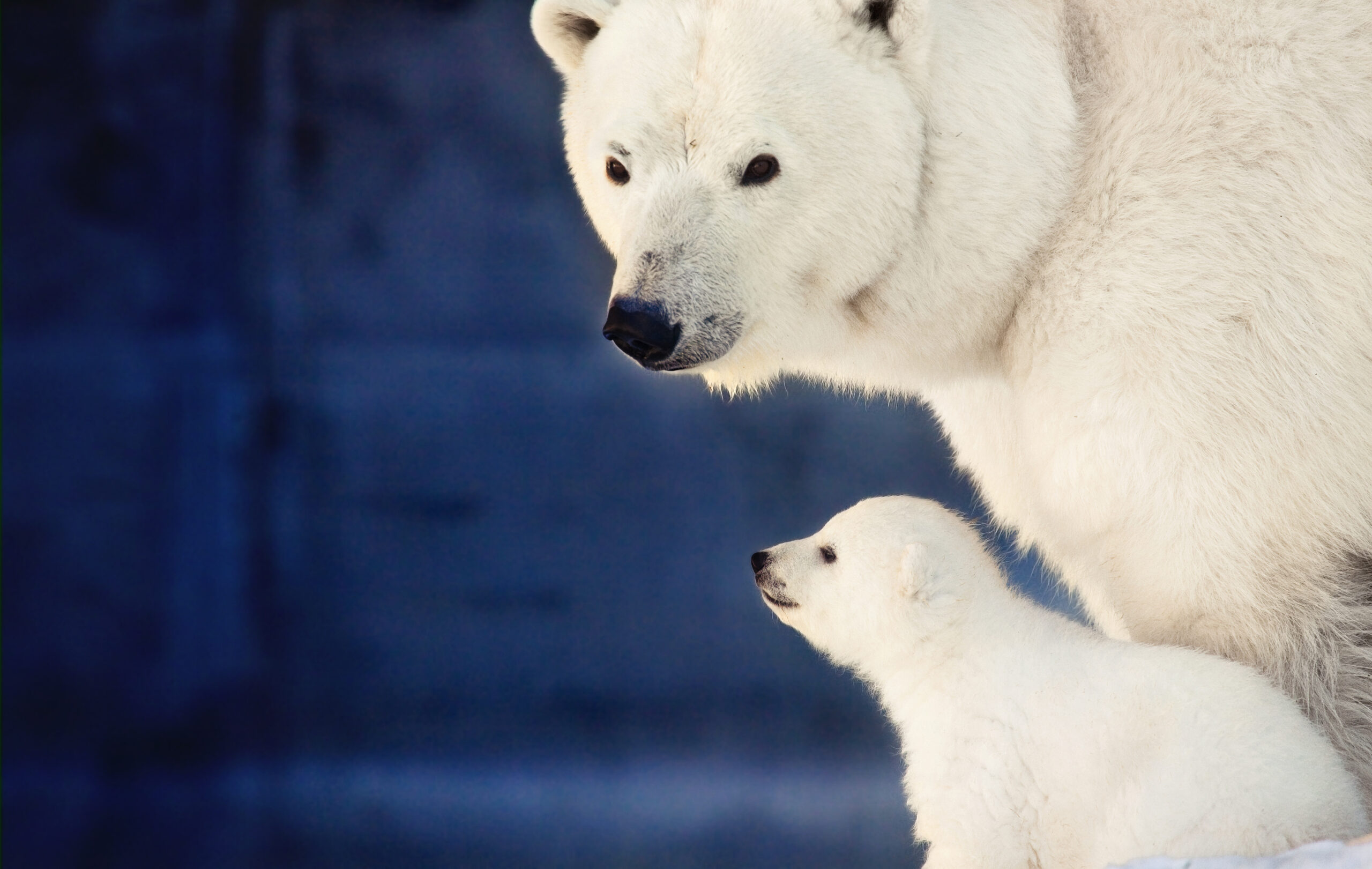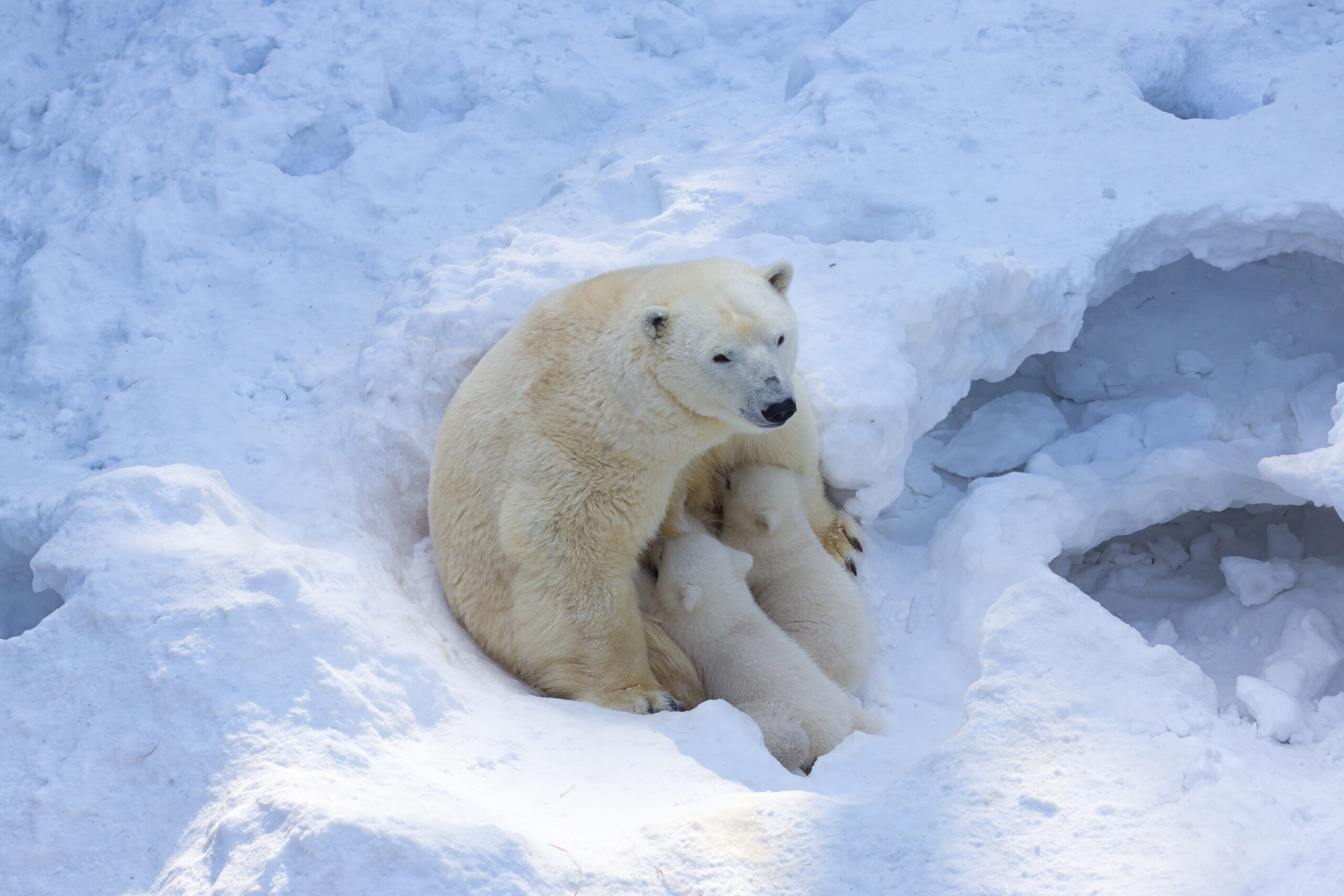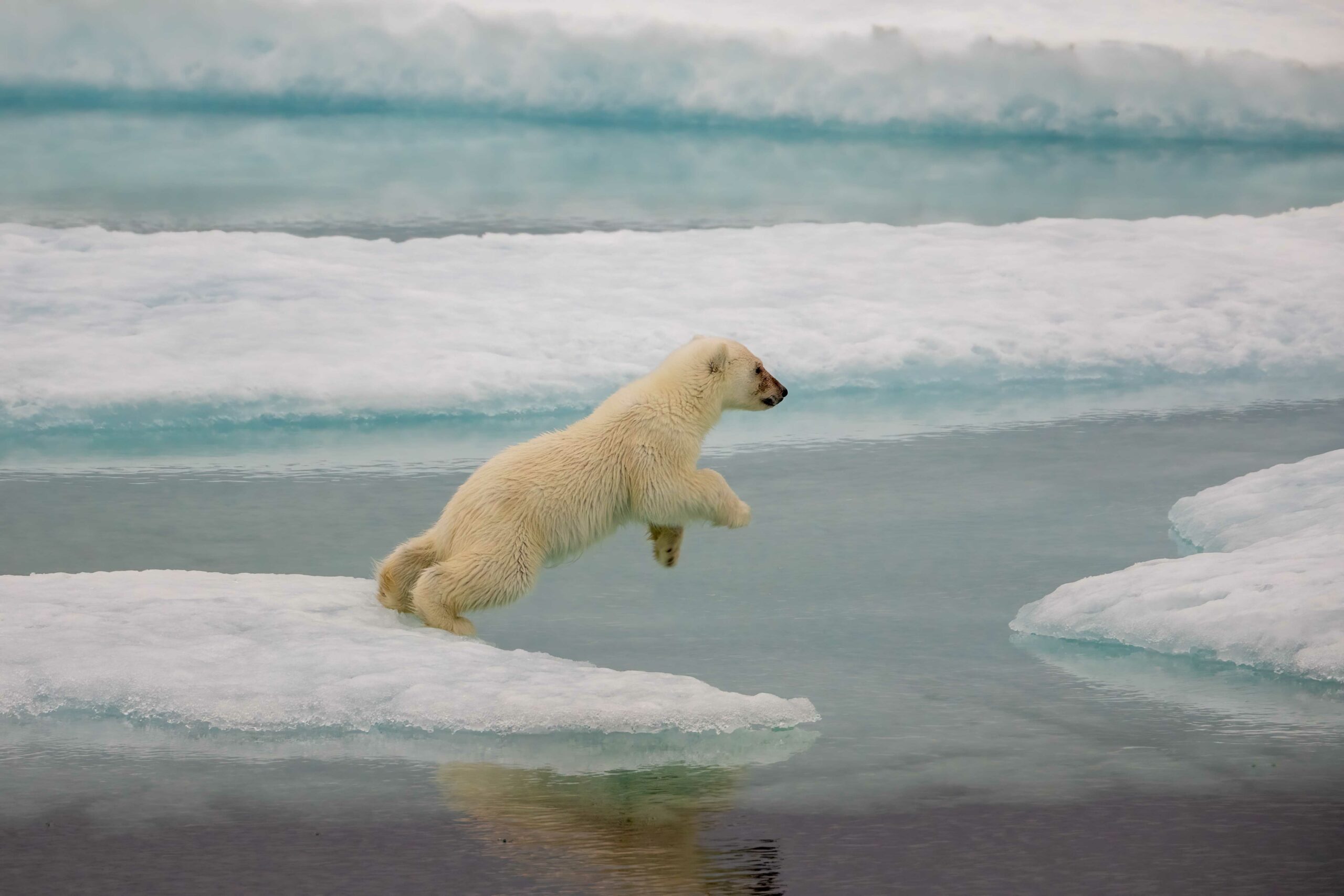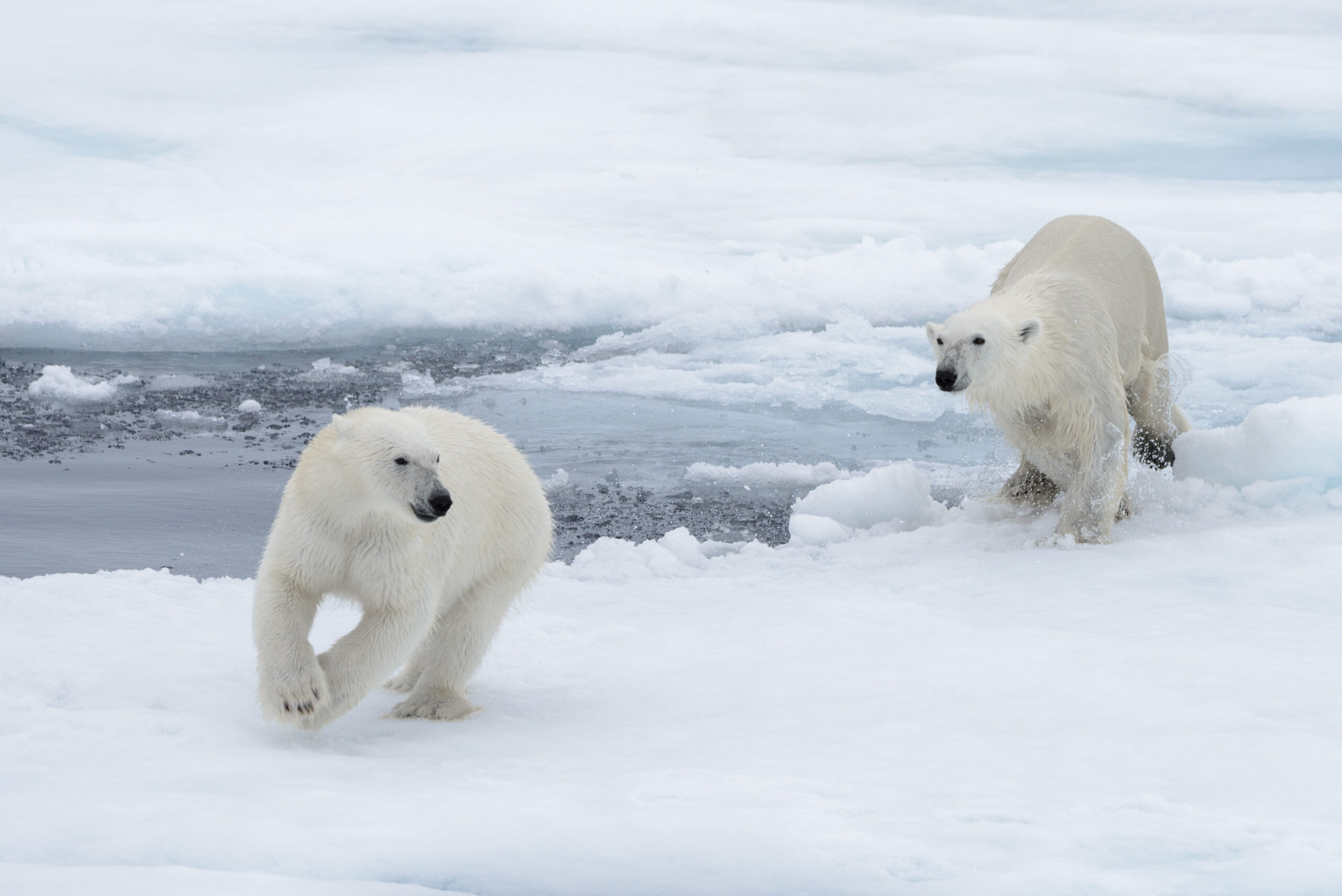Polar bear cub coming out den, Wapusk N.P., Adobe Stock, by andreanita
Polar Bear Day
The Life of Nanook
(A.k.a., the Polar Bear)
Polar bear mothers dig maternity dens in the snow when it’s time for their babies to arrive. Cubs are born in late fall and early winter with their eyes closed and without teeth. They are very small, weighing only a pound or two. Mother bears keep their cubs in the snow den for the first few months of their lives to give them a better chance for survival in the frigid north.

Little polar bear cub with big bear, Adobe Stock, by Ekaterina Shvaygert
Polar bears come out from their snow dens in the early spring with the sows (female bears) very hungry. Mother bears don’t eat for seven to eight months while giving birth and nursing their cubs.

Polar Bear mom feeding twins cubs, Adobe Stock, by Anton Belovodchenko
Polar bear sows are loving and attentive mothers who would risk their lives to protect their cubs. Mother bears teach their cubs how to navigate their icy habitats, how to hunt, and how to avoid threats. Male polar bears are the number one predator of their cubs. No father-of-the-year awards for them.

Polar bear cub attempting leap, Adobe Stock, by KarenFoleyPhoto
Coys (bears less than a year old) are not very good at hunting and would most likely not survive without their mothers. Yet they are quick learners and soon they can hunt and swim and navigate the ice. After two of three years of caring for her cubs, the mother allows them to wander off on their own.

Two young wild polar bears playing on pack ice in Arctic sea, Adobe Stock, by Alexey Seafarer
Adult polar bears are the fiercest animals in the wild and the apex predator in the north. They can grow to be ten feet in length and weigh as much as two thousand pounds. Mature bears can swim for several days at a time and walk over twenty miles per day for a week straight.
They are so well adapted to their natural habitats that one would think polar bears would have an easy life once they reach adulthood. For hundreds of thousands of years that has been true. But times are changing.
Polar bears are classified as vulnerable due to habitat loss and pollution. These remarkable creatures depend on sea ice, and the ice is melting. While they can swim for days at a time, one day that may not be enough to survive.
Another story that makes you think.
– – –

NatAtEnv was formed by BioTriad Environmental, Inc. to provide entertaining and informative media while keeping the wonders of nature in the public eye.


